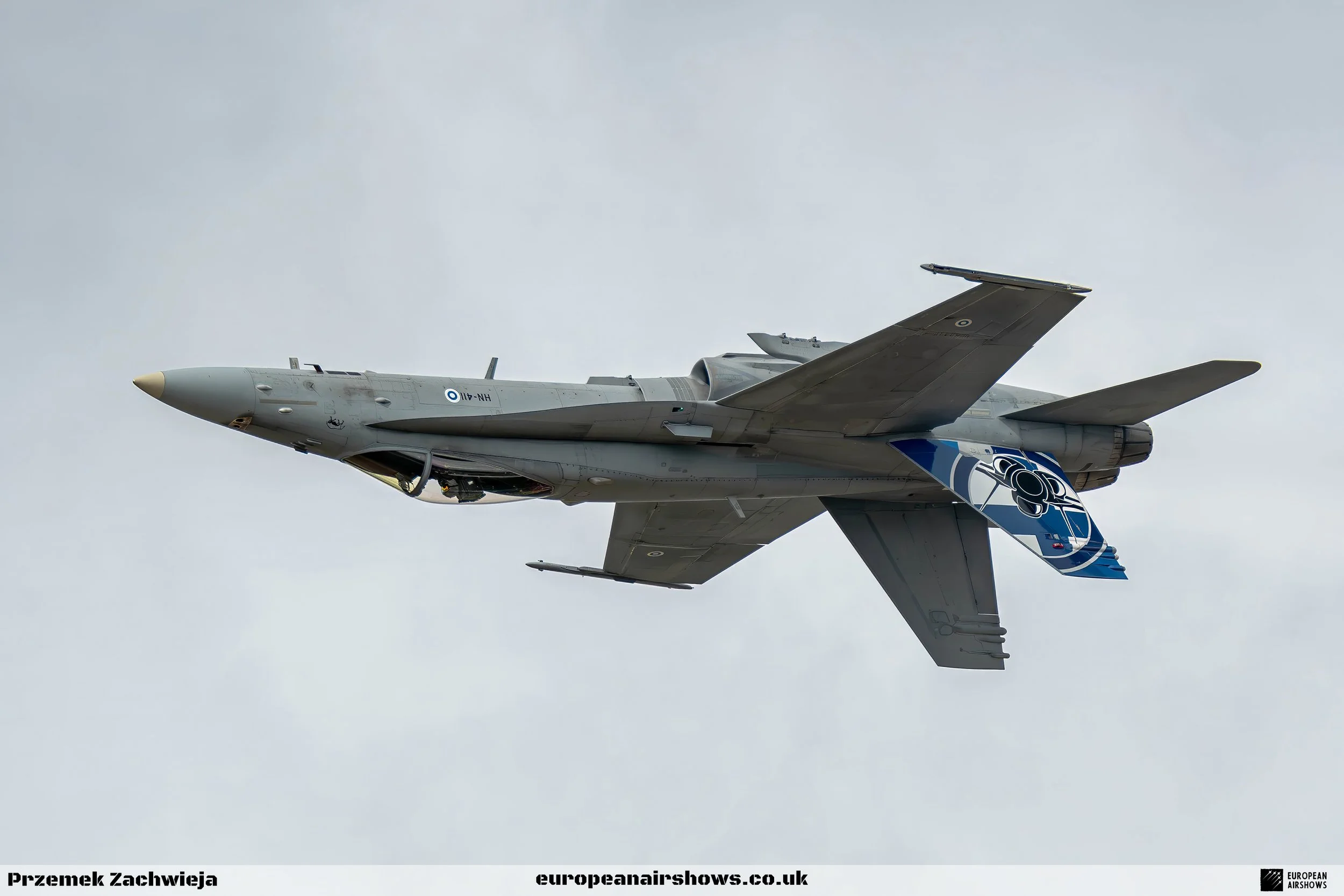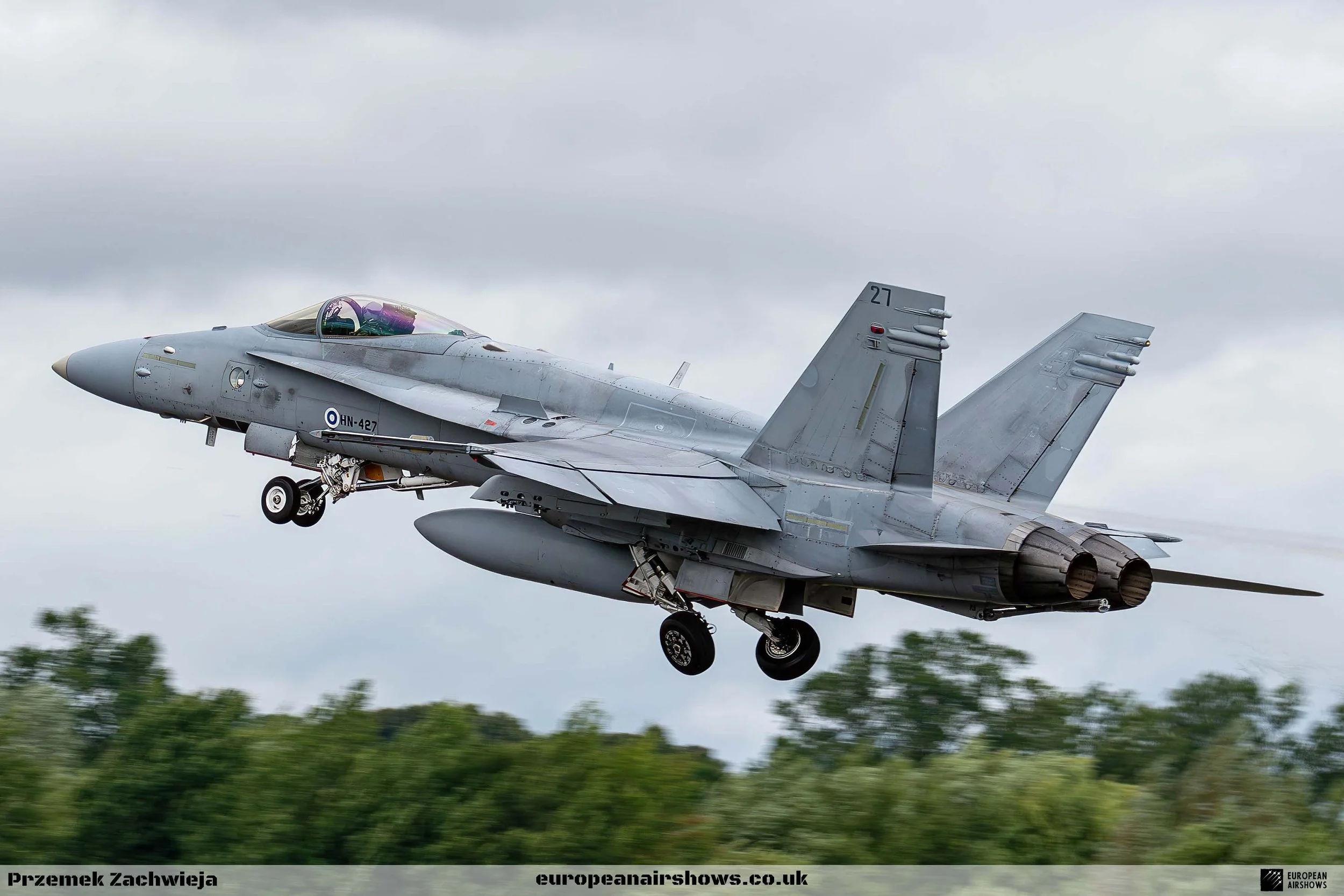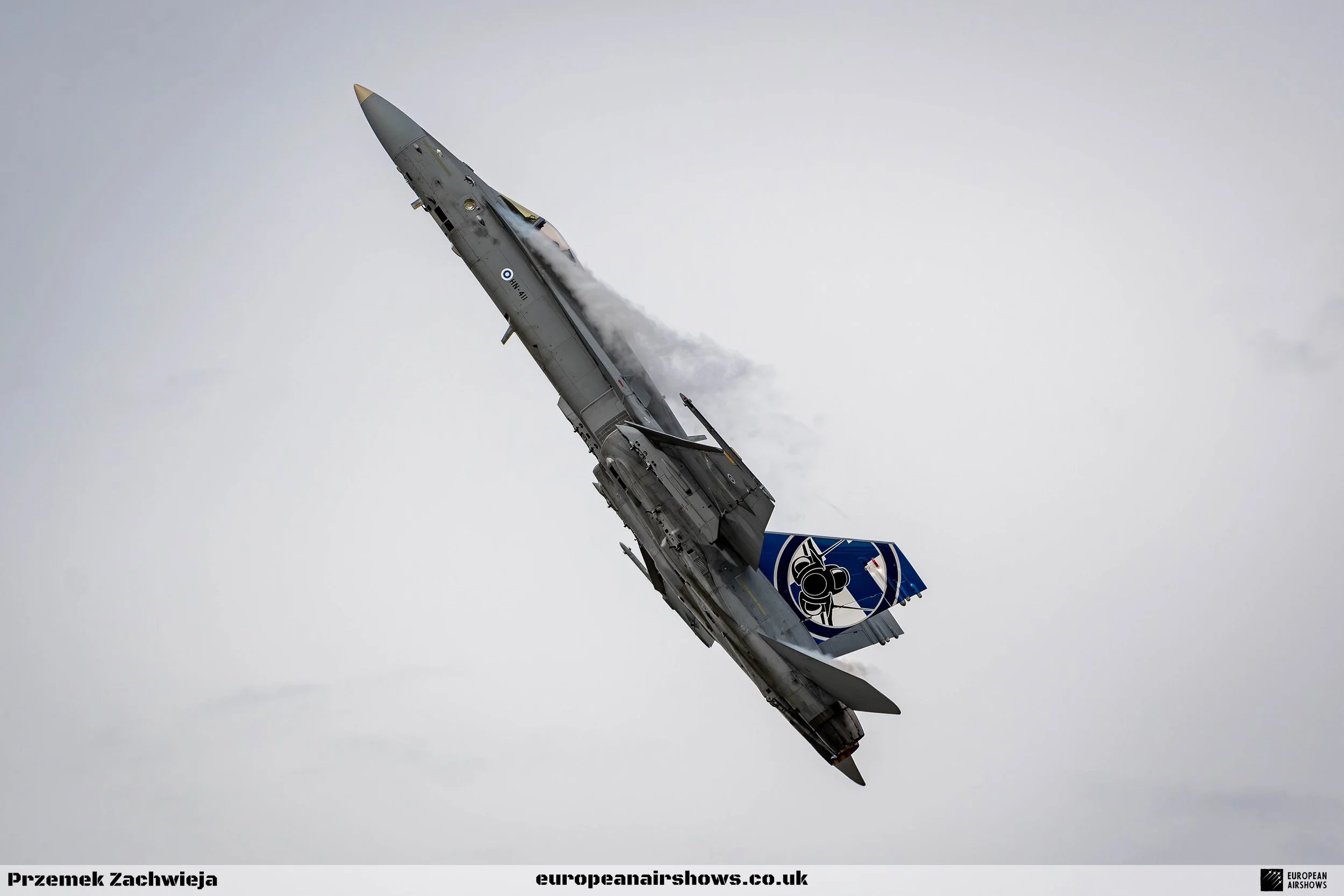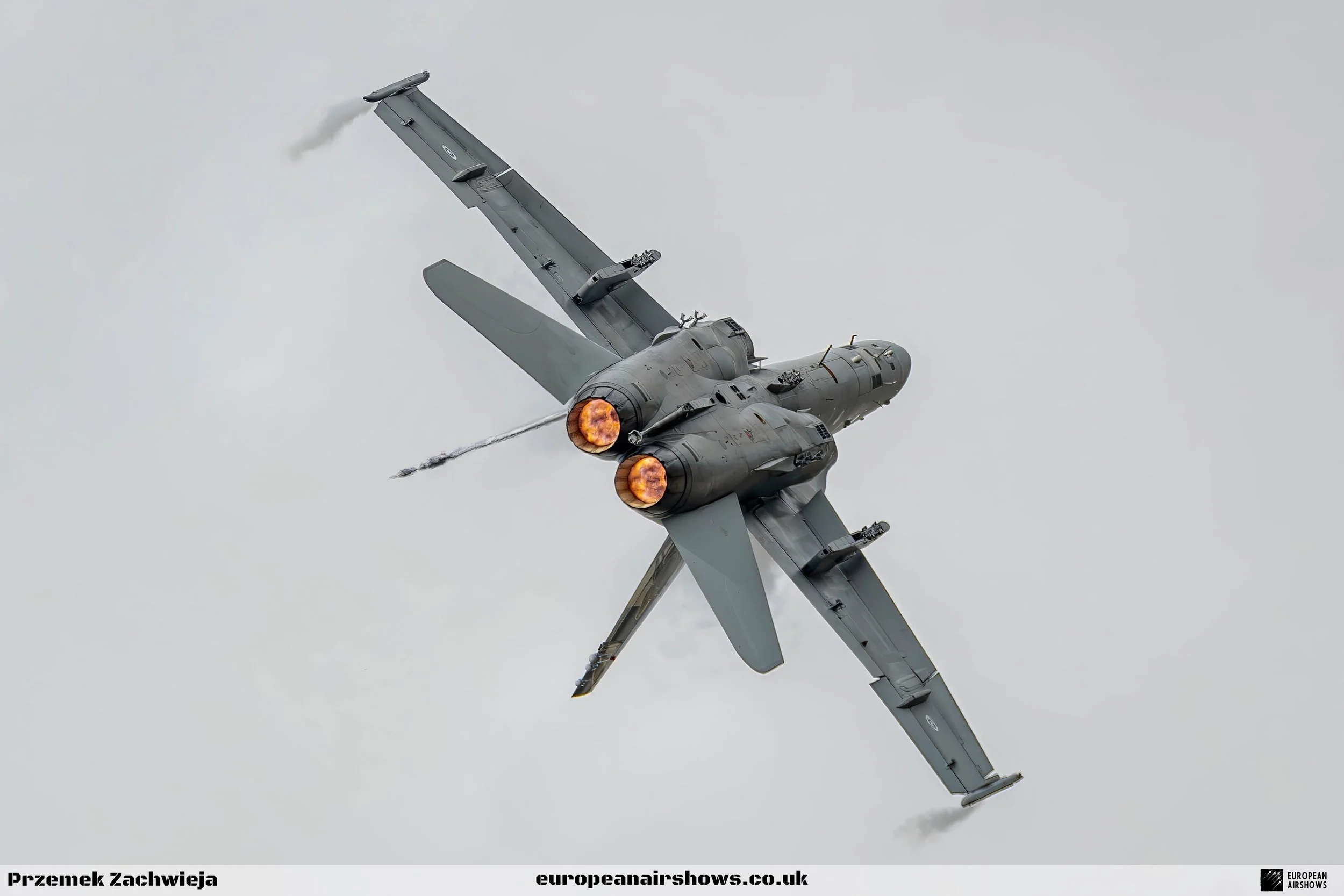Finnish Air Force F/A-18 Hornet Crashes During Practice Display
On Wednesday, May 7, 2025, a Finnish Air Force F/A-18 Hornet Solo Display jet plummeted to the ground during a practice session near Rovaniemi Air Base, sending a ripple of concern through Finland’s military aviation community. The incident unfolded just minutes after takeoff, but the pilot managed to eject safely, escaping with minor injuries—a testament to both training and quick thinking under pressure.
The crash occurred at around 10:50 a.m., only five minutes into a routine aerobatic training flight that began at 10:45 a.m. from the Lapland Air Command’s base in Rovaniemi. The aircraft, identified by its fuselage number HN-409, was performing maneuvers designed to thrill crowds at upcoming air shows when it suddenly lost control. What followed was a dramatic sequence of events that could have ended far worse, but instead highlighted the resilience of Finland’s air force personnel.
Finnish Air Force Hornet / Royal International Air Tattoo 2023
The Hornet slammed into the ground on the edge of the runway area, skidding across the tarmac and coming to rest at the corner of a construction site earmarked for Finland’s future F-35 facilities. Fortunately, the site was unoccupied—no workers, no buildings, just open space—sparing the incident from becoming a broader tragedy. Flames erupted from the wreckage almost immediately, but rescue teams from both the Lapland Air Command and Finavia, Finland’s airport operator, were on the scene in moments. Their swift response extinguished the fire before it could spread, containing the damage to the aircraft itself.
Meanwhile, the pilot, having ejected just before impact, parachuted down into the airfield area. He was met by the Lapland Air Command’s rescue unit, who quickly assessed his condition. Medical staff from the air force conducted an initial evaluation before an ambulance whisked him away to Lapland Central Hospital for further checks. Remarkably, he walked away from the ordeal with only slight injuries and was discharged later that day. On the ground, there were no casualties or injuries, a relief given the proximity to the bustling Rovaniemi Airport.
The Finnish Air Force’s F/A-18 Hornet is no stranger to the skies above Finland. Introduced in the late 1990s, this multirole fighter has been a cornerstone of the nation’s air defense for over two decades, known for its agility and versatility. The Solo Display team, based at the Lapland Air Wing in Rovaniemi this year, takes this capability to another level, pushing the aircraft to its limits with breathtaking aerobatic performances. Leading the team for the 2025 season is Captain Paulus “Hassel” Kärnä, a veteran with 11 years of experience and nearly 1,000 flight hours on the Hornet. As the Chief of Fighter Squadron 11 Tactics Office, Kärnä has honed his skills to showcase the aircraft’s prowess, though the Finnish Air Force has not disclosed whether he was the pilot involved in this particular crash.
Despite the dramatic scene, the incident caused minimal disruption. Rovaniemi Airport, a key hub in northern Finland, remained fully operational, with no impact on passenger flights or civilian traffic. Finavia confirmed that the accident wouldn’t derail ongoing operations or the construction of the F-35 site, a project tied to Finland’s gradual transition from the Hornet to the next-generation stealth fighter. Lentokentäntie, the road to the airport, was briefly closed to accommodate rescue efforts, but it reopened quickly once the situation was under control. Military police and local authorities cordoned off the crash site, ensuring safety while the investigation began.
Just one day earlier, on May 6, the Solo Display team had soared through the skies at Jyväskylä Airport in Tikkakoski, Finland, as part of the Careers in Military Aviation Day. The event drew crowds eager to see the Hornet in action, its sleek frame twisting through manoeuvres like the signature “Dirty Roll”—a barrel roll performed with the landing gear extended, a move that underscores the aircraft’s unique agility. It was a triumphant start to what promised to be a packed 2025 season, with the team slated to perform across Finland and beyond.
That season, however, now hangs in the balance. The team had a busy schedule ahead, starting with another Careers in Military Aviation Day on May 14 at Satakunta Air Command in Pirkkala, Finland. From there, they were set to take the stage at the Kauhava Air Show on June 14-15, a beloved event at Kauhava Airport that draws aviation enthusiasts from across the country. The international spotlight awaited in July, with a performance at the Royal International Air Tattoo (RIAT) at RAF Fairford in Gloucestershire, UK, from July 18-20—one of the world’s premier military air shows. August promised a homecoming display on the 21st at the Lapland Air Wing in Rovaniemi, followed by a trip to the Radom Air Show in Poland on August 30-31, another major stop on the European circuit.
The crash on May 7 throws a shadow over these plans. A crash like that, even with no loss of life, raises questions about the team’s ability to continue. The Finnish Air Force has yet to comment on whether the season might be curtailed or cancelled entirely. An investigation is underway to determine what went wrong—mechanical failure, human error, or some unforeseen factor—and its findings could influence not just the display schedule but also broader safety protocols for the Hornet fleet. For now, there’s no official word, leaving fans and organisers alike in suspense.
Finland’s Hornets have long been a point of pride, bridging the gap between the nation’s Cold War-era defences and its modern military ambitions. The F/A-18C model, like the one that crashed, is a workhorse—capable of everything from air-to-air combat to the dazzling aerobatics of the Solo Display team. But change is on the horizon. In 2022, Finland ordered 64 F-35A Lightning II jets, a $9.4 billion investment set to replace the ageing Hornet fleet over the coming years. The construction site where HN-409 came to rest is part of that future, a physical reminder of the transition underway. Until the F-35s arrive, though, the Hornets remain vital, both for defence and for inspiring the next generation of pilots through displays like those planned for 2025.
The Solo Display team’s performances are more than just entertainment—they’re a showcase of Finnish precision and skill, a chance to flex military muscle on an international stage. The crash is a stark reminder of the risks involved, even in practice. Every twist, every roll, every climb carries the potential for danger, yet it’s that very edge that makes the displays so captivating. The pilot’s safe ejection speaks to the rigorous training and advanced technology baked into the Hornet program, from its ejection seats to its durable airframe.
As the Finnish Air Force sifts through the wreckage—both literal and figurative—the focus will be on learning from this incident. Was it a one-off, or a sign of deeper issues with the aging fleet? The answers will shape not just the Solo Display team’s season but also how Finland manages its Hornets in their final years of service. For now, the team’s supporters can only wait and hope to see the Hornet roaring back into the sky, its pilot’s skill once again defying gravity for all to see.












